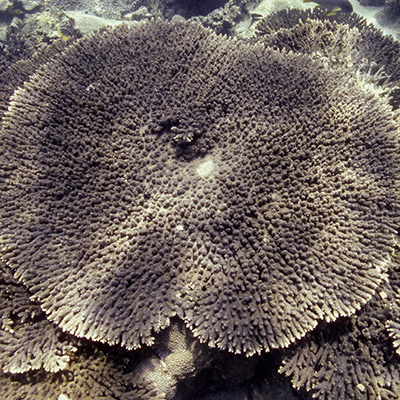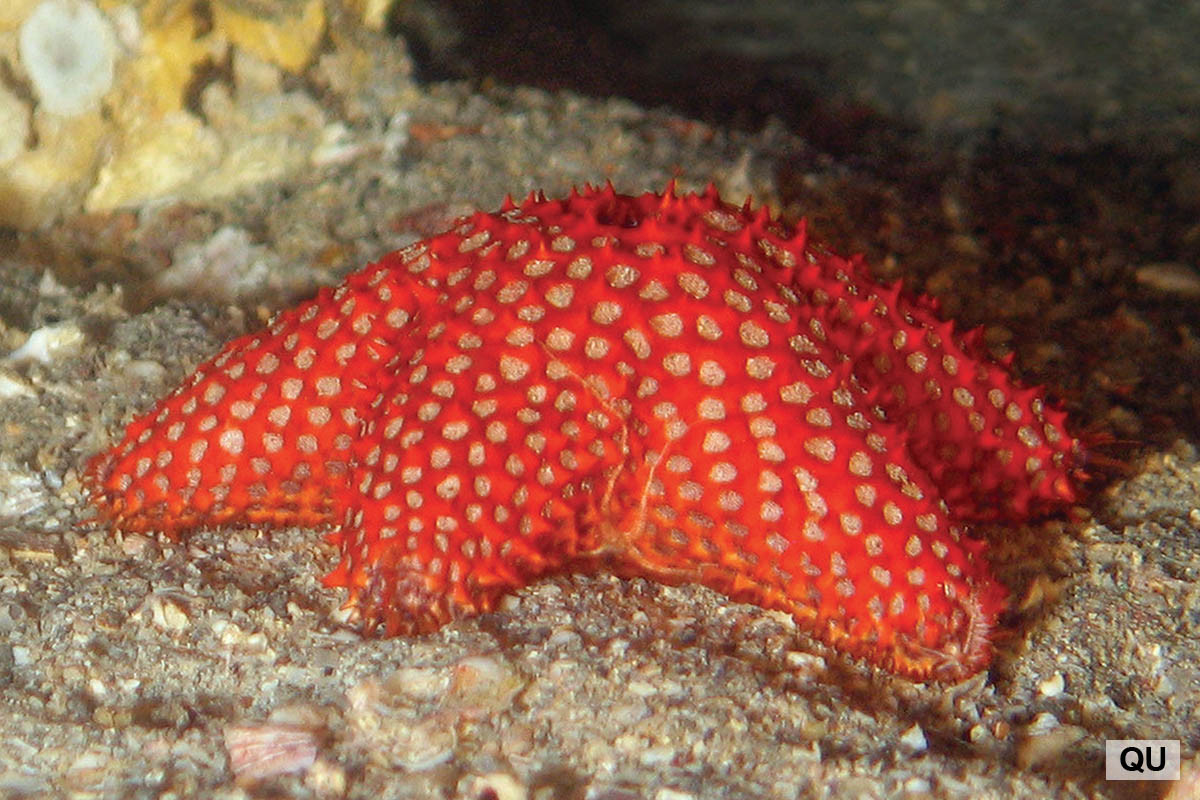Name: Euretaster cribrosus
Local name:
Scientific name: Euretaster cribrosus
Classification: Class: starfishes; order: velatids (Velatida); family: sea stars (Pterasteridae)
Size: Measurements of overall diameter (including arms) reported in literature and divers’ observations range from 12 to 20 cm.
Habitat:
Species of the genus Euretaster occur in shallow-water areas of tropical waters, in contrast to most other genera of the family, which prefer temperate or cold water habitats. Euretaster cribrosus lives over coral rubble near the reef base, usually at about 20 m depth, but possibly down to the maximum reported depth of more than 100 m. Having no hard mouth parts to capture prey, it feeds by browsing on the substrate, but specific dietary preferences are poorly known: it has been listed as being corallivorous, but also as preferring sponges and detritus. Nearly all known pterasterids brood their young, as opposed to the standard echinoderm strategy of releasing reproductive cells into the surrounding water. The cavity formed below the supradorsal membrane serves as a brood chamber for the eggs, which are retained in it throughout their development to juvenile stage and released through the osculum. This chamber beneath the supradorsal membrane, which makes the body look somewhat inflated and like a cushion, is the most distinctive feature of the species.
Distribution:
The species is widely distributed in the tropical Indo-Pacific, from the east coast of Africa into the Red Sea and Arabian Gulf and eastward to the islands of southeast Asia.
Conservation status:
Euretaster cribrosus has not yet been assessed for the IUCN Red List of Threatened Species.
Description:
The unique five-rayed (pentameral) radial symmetry typical of echinoderms is very clearly displayed in starfishes, as they have a pentagonal star-shaped body with five arms radiating from a central disk. This species has a soft and cushion-like body, with a swollen disk and short arms. The arms taper towards their blunt tip and are approximately cylindrical in cross-section. The body wall includes an internal skeleton consisting of small calcareous plates called ossicles (“little bones”), which are interconnected via fibrous junctions to form a firm, but flexible grid. The mouth is located centrally on the disk’s pale underside, or oral side, and thus oriented against the substrate. Situated on the dark upper, or aboral, side are the central anus and the madreporite, a button-like calcareous sieve just off center that connects the echinoderms’ unique water vascular system to the environment. This system, also called ambulacral system, consists of a network of internal fluid-filled canals and uses hydraulic pressure to operate its numerous tentacle-like extensions, the tube feet. Radiating outward from the mouth into each of the arms are five deep furrows called ambulacral grooves, into which the tube feet project from either side. Tube feet perform locomotory and respiratory functions; they have a suction disk at their tip that helps the animal to stick to the substrate or grasp food items tightly. A unique morphological character of the family is a canopy-like secondary covering, known as the supradorsal membrane, that stretches over the body wall of arms and disk, supported by the tips of tall aboral spines, leaving a cavity between the two layers. This cavity is open to the sea through a muscular and contractile valved opening, the osculum, at the center of the upper surface. Coloration of live specimens is deep red, becoming pale brownish gray after preservation in alcohol.








